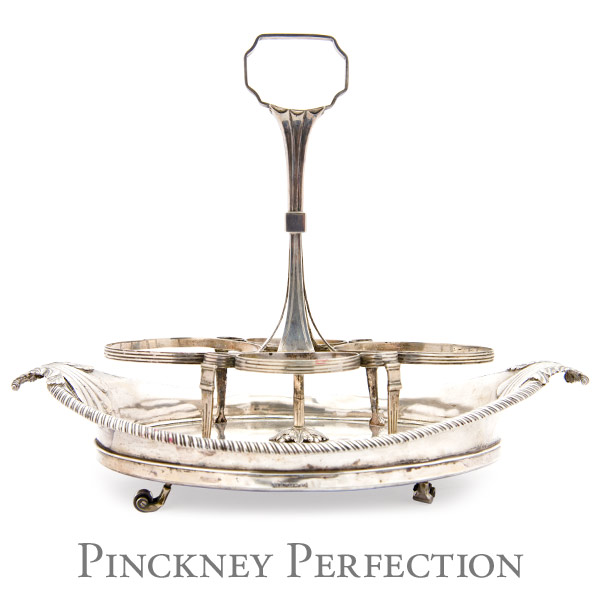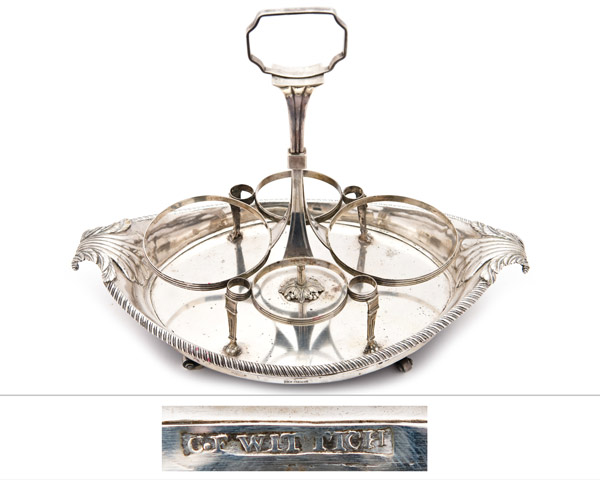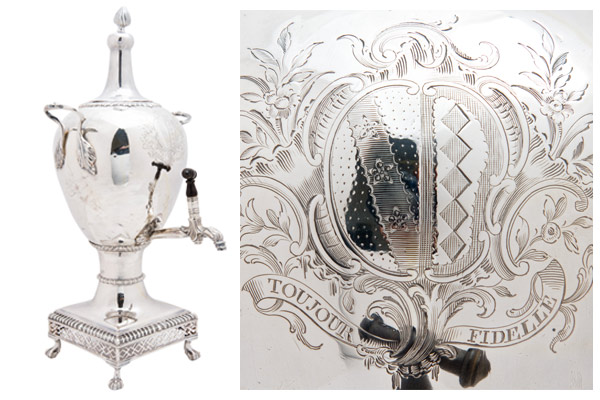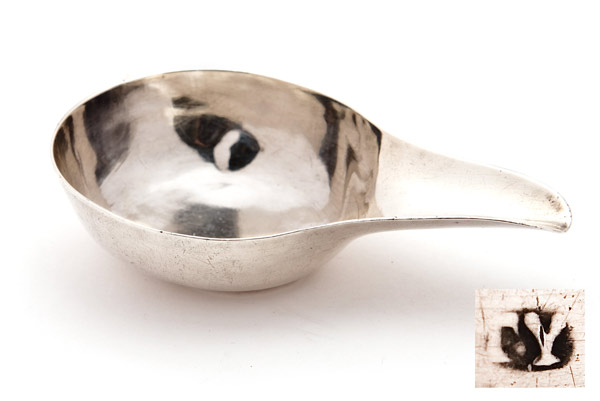Pinckney Perfection
It might be a bit of an old cliché, but one of the best parts of this job is never knowing just what is going to come through my office door here at America’s first museum.
Having an appointment with both our Director and me a few weeks ago, two friends-loyal museum supporters and members of Charleston’s long-heralded Pinckney family-decided that perhaps the Charleston Museum was the best, most suitable, location to donate a few family heirlooms. Nothing could have prepared us for what exactly they had in store for us.
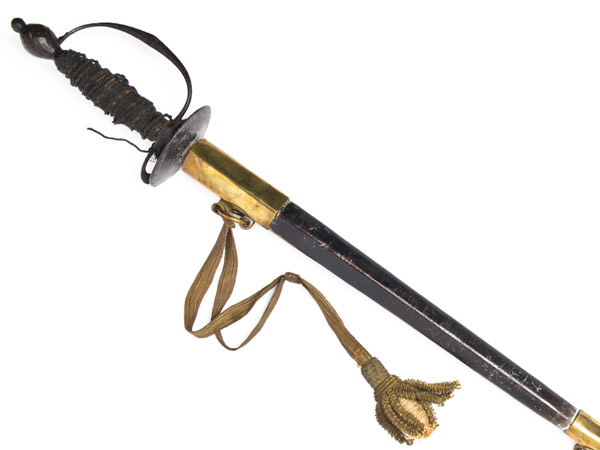 Presenting a few unremarkable cardboard boxes, imagine our surprise when the first item was unpacked to reveal the war sword of Charles Cotesworth Pinckney, a Charleston-born Revolutionary War general, signer to the United States Constitution and two-time Federalist Party candidate for the U.S. presidency. It was an unmarked, likely American-made rapier dating to the 1760s-70s. The piece is still accompanied by its leather and brass scabbard and, even more amazingly, its original hilt tassel. As many know, the Charleston Museum has been home to Pinckney’s dress sword for many years currently on view in the Becoming Americans exhibit area. This new battlefield sword unlike the dress piece, is all business.
Presenting a few unremarkable cardboard boxes, imagine our surprise when the first item was unpacked to reveal the war sword of Charles Cotesworth Pinckney, a Charleston-born Revolutionary War general, signer to the United States Constitution and two-time Federalist Party candidate for the U.S. presidency. It was an unmarked, likely American-made rapier dating to the 1760s-70s. The piece is still accompanied by its leather and brass scabbard and, even more amazingly, its original hilt tassel. As many know, the Charleston Museum has been home to Pinckney’s dress sword for many years currently on view in the Becoming Americans exhibit area. This new battlefield sword unlike the dress piece, is all business.
While Pinckney’s dress sword bears notable decorations and elegant accents such as an ivory wrapped handle, gold-plated and decorative pommel, the newly acquired sword has far more wear and tear typical of battlefield conditions, presents practically no decorative attributes and is equipped with a far sturdier and stronger wire-wrapped wooden handle. Furthermore, its formidable blade is actually more of a three-sided spike and, upon close examination, has been sharpened repeatedly.
Now, as much as the meeting could have ended in success right then and there, the gracious donors were just getting started. Inside another packed box was an immense coin silver wine trolley neatly engraved “HH” for none other than Harriott Pinckney Horry, Charles Cotesworth Pinckney’s younger sister and only surviving daughter to Charles and Eliza Lucas Pinckney. Besides its fantastic provenance, the clear maker’s marks appearing on either side of the trolley’s base denote the piece’s local manufacture: “CˑF WITTICH” for brothers Charles and Frederick Wittich, whose Charleston partnership lasted only from 1802 to 1806.
Different from smaller cruet sets or castor stands, this mammoth wine trolley was made to hold two full-size and two somewhat smaller wine bottles and their accompanying stoppers (note the smaller rings between the larger ones). Of course, when filled and ready to serve, the wine trolley made for an exceptionally heavy serving piece, but, fortunately, the Wittich brothers thought of that and equipped the trolley’s floor with four wrought silver rollers to ease movement around a large dining table.
Not forgetting Charles and Harriott’s heroic mother, of course, the donation further included a massive London-made 1768 hot water urn belonging to Eliza Lucas Pinckney, who as a teenager took control of three of her parents’ plantations and forever changed South Carolina’s agricultural history with her successful cultivation of indigo. Crafted in three sections, the urn’s front is engraved with the Pinckney’s unmistakable coat of arms. Furthermore, the silversmith’s attention to detail is evident in its Chinese Chippendale fretwork, ball-and-claw feet and elegantly turned finial.
Finally, sometimes it’s the smallest pieces that pack the most punch. It hardly ever happens nowadays, but what emerged from the depths of the last box left me gasping for air. No larger than the palm of my hand was a Charleston-made, coin-silver pap boat made by Thomas You, whose simple “TˑY” mark on the back side nearly knocked me out of my chair. Despite his renown as a local silversmith by the late 1750s, Thomas You marked silverwares are, today, remarkably elusive. Not just the maker, though, a mid-eighteenth century, southern-made pap boat is in itself quite a rarity. Designed as feeding devices for infants and/or invalids, pap boats were essential tools for delivering soft or liquefied food to those unable to feed themselves.
Alas, Charles and Eliza’s children were just past the need for a pap boat by the time Thomas You opened his Charleston shop circa 1753. However, since he maintained his roundly successful silvermithing firm into the 1780s, it is quite likely that at least one of those children – Harriott, Thomas, or Charles Cotesworth Pinckney – were feeding their own infants with this very piece, and it’s got the dents to help prove it!
With each piece needing only minor restoration and conservation, rest assured these new gifts will be showing up in the Charleston Museum’s galleries in the coming months.
Editor’s note:
Check out even more Pinckney family collections pieces held by the Charleston Museum:
Eliza Lucas Pinckney
Charles Cotesworth Pinckney
Thomas Pinckney


